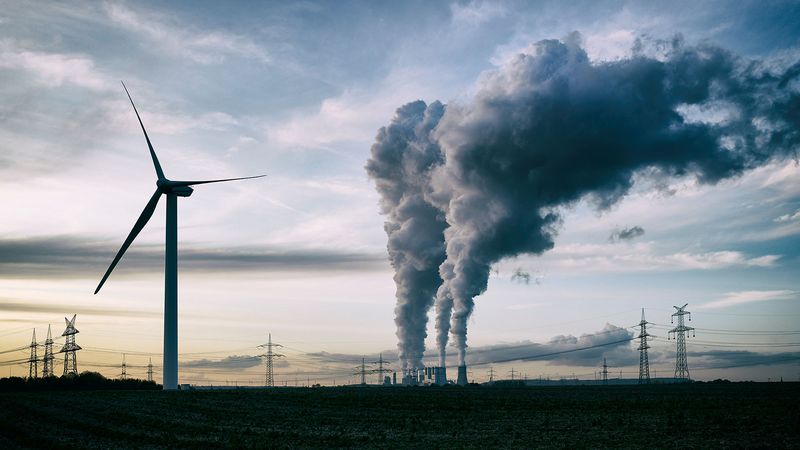Moving Toward an Electrified Solution to Generate Heat for Manufacturing Industries
Texas A&M researchers will conduct a two-year “jumpstart” project devoted to developing electrified heating technologies.

Image: Getty Images
This article was first published on
engineering.tamu.eduWhen early humans learned to harness fire for heat around 400,000 years ago, it marked a monumental turning point in mankind’s history. Heat is used for various purposes in the modern age, particularly in manufacturing, including refining, steel, cement, pulp and paper. The fossil fuels used to generate heat in these manufacturing sectors generate substantial greenhouse gas emissions. Hence, the United States Department of Energy (DOE) is now heavily investing in alternative technologies for heat generation.
Under the Manufacturing USA initiative, the DOE has made a significant stride by awarding $70 million to the Electrified Processes for Industry without Carbon (EPIXC) Institute. This institute, led by Arizona State University and with key partnerships with national labs and universities, including Texas A&M University, is a beacon of hope for the future of electrified heating technologies. EPIXC's funding, through the Office of Energy Efficiency and Renewable Energy’s Industrial Efficiency and Decarbonization Office, is a testament to the promising future of these technologies.
“A significant portion of the heat used in manufacturing is currently generated by burning fossil fuels,” explained Dr. Mark Barteau, professor in the Artie McFerrin Department of Chemical Engineering and C. D. Holland ’53 Chair at Texas A&M. “However, with the potential of abundant carbon-free energy in the future, we could revolutionize the industry by using electrical energy for heating, thereby significantly reducing greenhouse gas emissions.”
Texas A&M is a core partner in EPIXC through the leadership of the Texas A&M Energy Institute. Texas A&M researchers will contribute across the EPIXC mission, including development of a “roadmap” for decarbonization of manufacturing processes. The five-year program will be initiated with a two-year “jumpstart” project devoted to developing innovative electrified heating technologies for propane dehydrogenation, a chemical process for converting propane to propylene, a material that has several commercial applications, such as producing plastics, solvents and other chemicals.
As the name suggests, propane dehydrogenation involves the selective removal of two hydrogen atoms from a propane feedstock to make propylene. This reaction takes place in the presence of catalysts to speed up the reaction. But propane dehydrogenation is an endothermic reaction, which means that the chemical reaction consumes heat, which currently comes from burning fossil fuels. With their funding, Barteau and his team aim to (1) develop electrified chemical processes and (2) establish a program for workforce development for manufacturing personnel and researchers.
His team, including Dr. Micah Green and Dr. Benjamin Willhite both professors in the chemical engineering department, is currently developing a reactor based on internal radiofrequency (RF) heating of the propane dehydrogenation catalyst. A reason for using RF is to achieve good radiation penetration depth; that is, the radiation can reach inside the chemical reactor and create uniform heating temperatures. Thus, the team will work on reactor designs that best match the source of electrical energy put into the system.
A significant portion of the heat used in manufacturing is currently generated by burning fossil fuels. However, with the potential of abundant carbon-free energy in the future, we could revolutionize the industry by using electrical energy for heating, thereby significantly reducing greenhouse gas emissions.
- Dr. Mark Barteau
Another challenge that Barteau will be addressing is scaling these technologies from the laboratory to pilot-scale demonstrations and, ultimately, deployment in the field.
“A world-scale propane dehydrogenation plant will make about 600,000 metric tons of propylene per year. Electrified processes will need to be operable at that scale since these plants will require large amounts of clean electricity,” said Barteau. “This energy could be generated on-site, or it could be generated elsewhere and transmitted.”
The project could reduce CO2 emissions by 0.3 metric tons per metric ton of propylene produced and increase propylene yields by up to 10%.
The team will be further strengthened by the participation of two key members from the Texas A&M Energy Institute leadership: Dr. Stratos Pistikopoulos, professor of chemical engineering and director of the Texas A&M Energy Institute, Dr. Konstantinos Pappas, associate director at the energy institute. Their expertise will significantly contribute to the development of training curricula for workforce development, drawing upon the institute’s modular concept of its renowned educational program.
As climate change and global warming threaten the planet, Texas A&M and partners at EPIXC will strive to reduce the dependence on fossil fuels for heat generation and decarbonize industries by developing technologies to electrify process heating. The successful implementation of these electrified processes could significantly reduce greenhouse gas emissions from manufacturing, contributing to a more sustainable and environmentally friendly industrial sector.
Funding for this research is administered by the Texas A&M Engineering Experiment Station (TEES), the official research agency for Texas A&M Engineering.